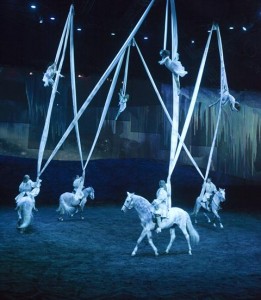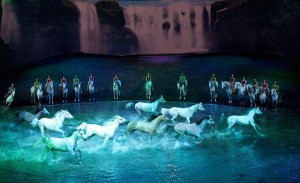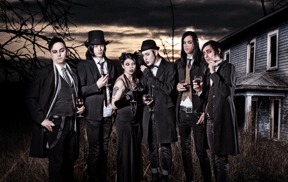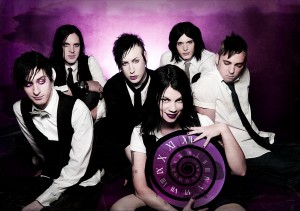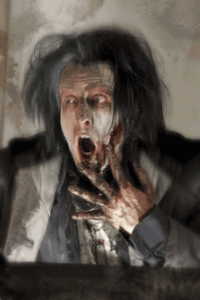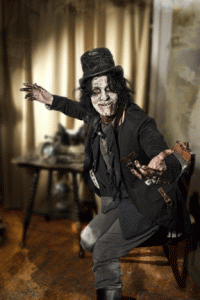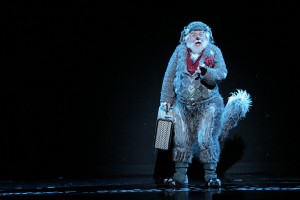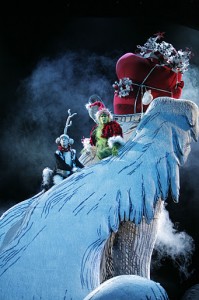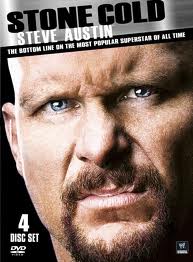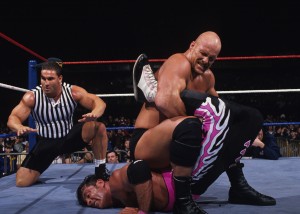By Jonathan Williams
With his cyber metal band Static-X, Wayne Static pioneered an “evil disco” sound that became a staple of the annual Ozzfest tours, numerous horror and action movie soundtracks and a couple of the WWE SmackDown! vs. Raw video games. After a decade-plus span that included six albums and several tours, the band went on hiatus in 2009 leaving front man Static to focus on Pighammer, his solo debut released in October. Following a string of fall tour dates, Static and his new band embark on a mini-tour Dec. 14-18 to preview a national tour beginning late next month. Before his pre-holiday tour, Static talks to Wrestling with Pop Culture about Pighammer, Static-X and the process of getting his life together for the better.
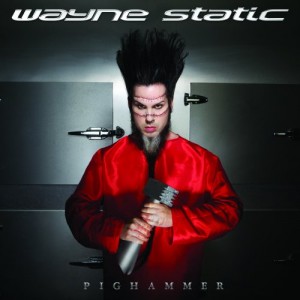 While you were the main creative force in Static-X, Pighammer is the first album released simply as Wayne Static. Was making this album a significantly different process from what you did with Static-X?
While you were the main creative force in Static-X, Pighammer is the first album released simply as Wayne Static. Was making this album a significantly different process from what you did with Static-X?
The writing process was very similar since I wrote all the Static-X stuff on my own anyway. The main difference was that I didn’t have to get together with a band after I wrote the songs and make compromises and changes to make everybody happy. I just got to create everything myself and do it on my own and do exactly what I wanted to do. So that’s the main difference, but the writing process was pretty much how I always write.
As far as recording goes, did you do most of that yourself or did you have other musicians helping you out in the studio?
Yeah, I did everything myself and really took my time and actually did a lot of the writing while I was recording. So most of the vocal performances are, like, first or second takes, which adds a lot of excitement to it. When I recorded the vocals, it’s not like I had been rehearsing it for months and was bored with the song already, which is what usually happens. Also, I recorded 24 tracks, didn’t do Pro Tools this time, so there’s no editing or anything like that. I think that also really gives it a really great, exciting kind of vibe without having anything cut and pasted anywhere. It’s all real performances.
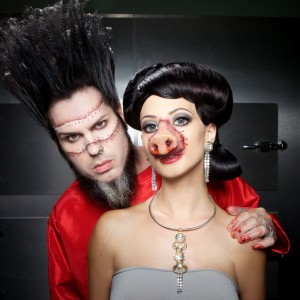 The artwork and imagery features you and your wife [adult film actress Tera Wray] with pig noses, metal stitches and things like that. If there’s an overall concept to Pighammer and its imagery, what would you say it is?
The artwork and imagery features you and your wife [adult film actress Tera Wray] with pig noses, metal stitches and things like that. If there’s an overall concept to Pighammer and its imagery, what would you say it is?
The original concept was transformation and my transformation leaving Static-X behind and making the record on my own. My wife and I left L.A. and moved out to the desert and spent some time getting clean, getting off drugs. So the record is generally about that. I wanted to figure out a way to display transformation in sort of a dark comical way, which I like to do. And the Pighammer name was something I had wanted to use for a long time, so my wife and I came up with this whole storyline were the Pighammer would be this surgical tool made out of a pig’s foot. She came up with this great idea where I’d be this mad plastic surgeon transforming her into a pig. There’s nothing literal about it. I just think it’s cool imagery and it does represent transformation.
That being said, the song “Get It Together” has a lot of references to partying and drug use and whatnot. Where would you say that song fits in with the overall theme of the album?
You know, that was one of the first songs I started working on. That song and a lot of the songs on the record deal with doing drugs and reminiscing about it, getting off drugs and that whole process. So that song literally is about getting it together. It’s a big decision to make when you want to get clean and it’s not easy to do. I didn’t go to rehab or anything like that, and I did it while I was making the record actually.
You did some shows earlier in the fall. How were those shows with the new band?
The shows were awesome. It was really refreshing to be on stage with a new group of guys who really want to be there and are really excited. I’ve got Sean Davidson on drums, Brent Ashley on bass and Ashes on guitar. Ashes really put my band together for me. He’s been a longtime friend and used to watch my house when I was on tour with Static-X. So that worked out really cool. I didn’t have to hold auditions or any of that crap. All these guys have played with other bands that have had some success, like Sean played with the Genitorturers.
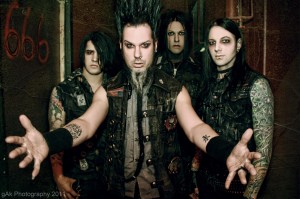 Would you say Static-X is over or just on hiatus?
Would you say Static-X is over or just on hiatus?
My opinion is we’re just on indefinite hiatus. We’ll see what happens. Towards the end of the last Static-X tour, it was very clear that no one really wanted to be there anymore and everybody really wanted to do their own thing. So I just kind of let everyone do what they wanted to do and started working on my stuff by myself. We’re kind of a strange band. We weren’t friends outside of the band, we never really hung out or anything like that. So I haven’t talked to the guys and I don’t even really know what they’re up to right now at this point. It’s been a couple of years.
You’re doing a string of shows this month to preview a national tour next year. Do you have opening acts touring with you for this mini-tour?
We’re just doing local openers. I really like doing that for a lot of reasons. It really helps promote the show, number one. But I think it’s really cool for the local bands as well to kind of help get their name out and get a foothold in their territory. We’re going to be doing a full tour next year hitting everywhere in the U.S. and we’ll be bringing some bands with us on that, but we’ll probably still have at least one local opener.
Will these December shows be indicative of what people can expect from your bigger tour next year or will next year’s shows be a bit bigger?
We’re just doing a building thing and seeing where it takes us. We’re just playing clubs right now and keeping it on a grassroots level – a little bit smaller venues than Static-X was playing. But it’s kind of appropriate since I’m kind of starting over in a way. We’re kind of growing it and taking it step by step. But we’ll be seeing you in January and February.
For more information, go to www.waynestatic.com.

